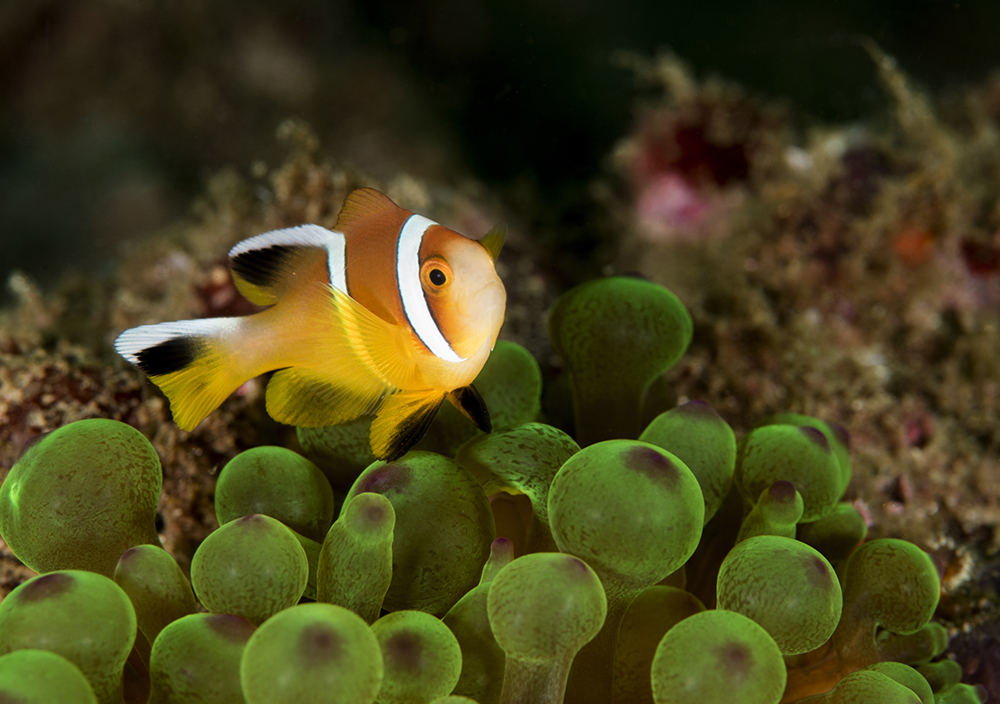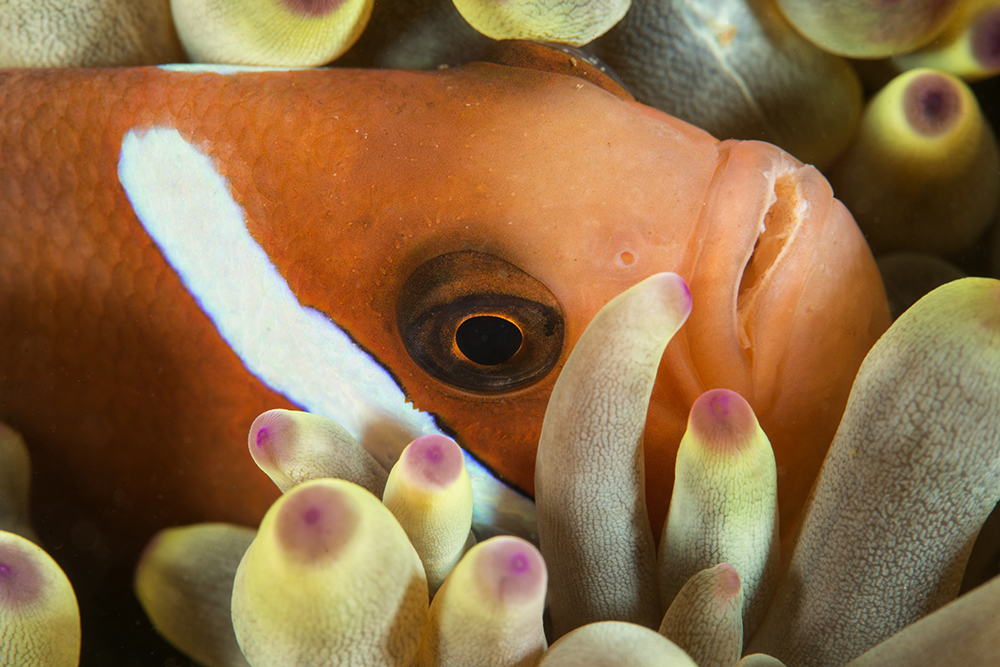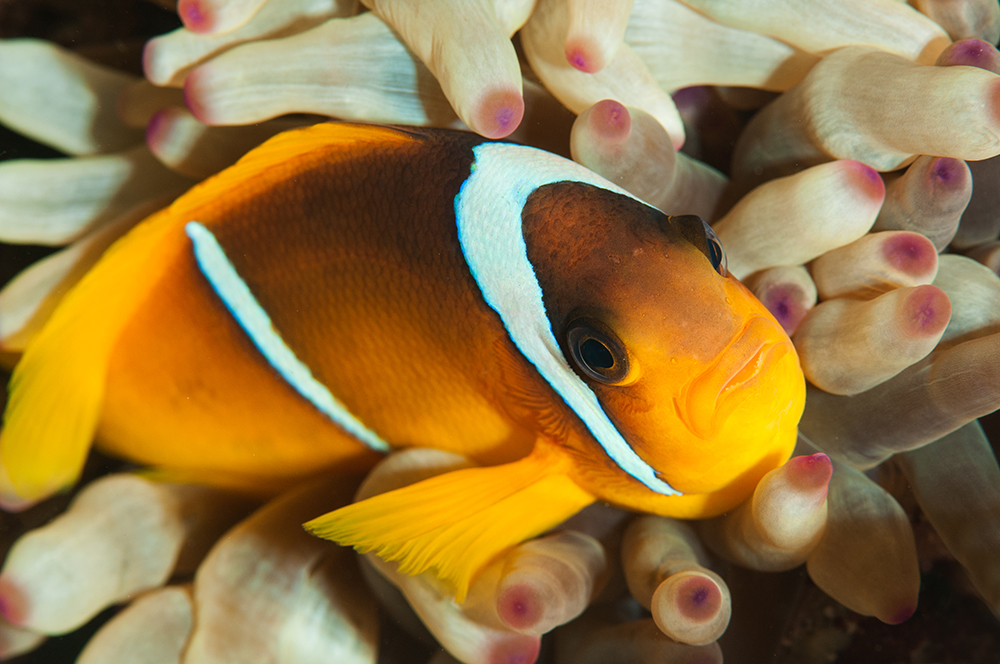According to a news study from Georgia Tech that examined the microbe rich mucous layers of both clownfish and anemones, the two are swapping microbe flora, which may contribute to the fishes avoiding being stung.
The research team studies clownfish and anemones in captivity and monitored their microbial flora.
“Their microbiome changed,” said Zoe Pratte, first author of the new study. “Two bacteria that we tracked in particular multiplied with contact with anemones.”
“On top of that, there were sweeping changes,” said Frank Stewart, the study’s principal investigator. “If you looked at the total assemblages of microbes, they looked quite different on a clownfish that was hosted by an anemone and on one that was not.”

It has always been assumed that it is some component(s) of the clown’s mucous layer that stops the anemones stinging. As the team points out, anemones evolved to sting and eat fish, this is a remarkable example of mutualism.
“The anemone may recognize some chemical on the clownfish that keeps it from stinging,” Stewart said. “And that could involve microbes. Microbes are great chemists.”
The team cautions that they need further study to discover if this is a peripheral effect of mutual contact or a mechanism that does interfere in the anemone’s sting reflex.
Quotes taken from a press release from Georgia Tech.
Journal Reference:
Zoe A. Pratte, Nastassia V. Patin, Mary E. McWhirt, Alicia M. Caughman, Darren J. Parris, Frank J. Stewart. Association with a sea anemone alters the skin microbiome of clownfish. Coral Reefs, 2018; 37 (4): 1119 DOI: 10.1007/s00338-018-01750-z











0 Comments